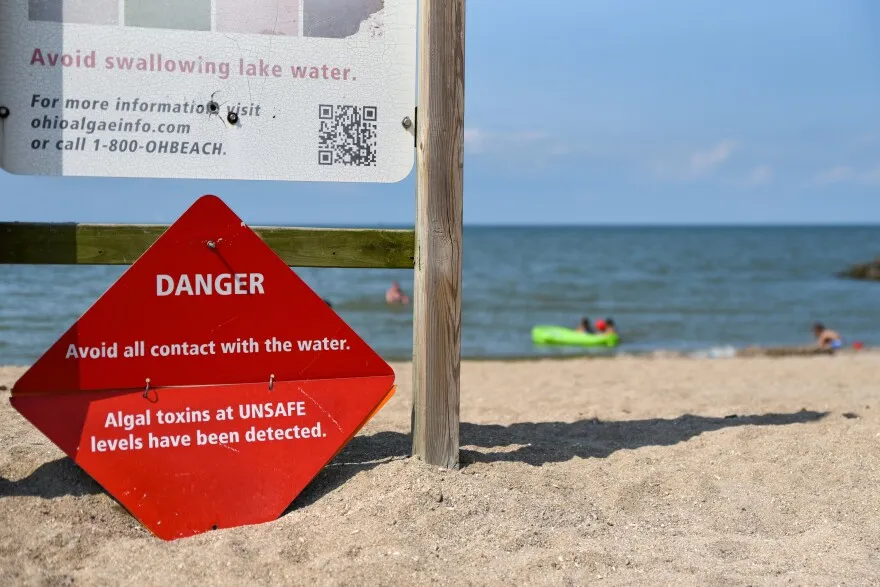CLEVELAND, Ohio — Lake Erie, the jewel of the Great Lakes, attracts thousands of visitors each summer with its sandy beaches and cool waves. For many families in Northeast Ohio, a day at Edgewater or Headlands beaches is a sun-filled and laughter-filled tradition. But behind this idyllic picture lie hidden threats: E. coli bacteria lurking after storms, and toxic algae blooms that can turn carefree recreation into a dangerous adventure. While officials assure that swimming in Lake Erie is mostly safe, experts and locals urge checking conditions before jumping in the water.
Bacteria in the waves
The Ohio Department of Health, in collaboration with local agencies, closely monitors water quality at dozens of beaches along the 312-mile shoreline of Lake Erie. Weekly, lab technicians collect samples to check for levels of E. coli bacteria — an indicator of fecal contamination often entering the water after heavy rains through farm runoff, sewage systems, and city streets. Elevated levels of these bacteria can cause gastrointestinal issues, skin infections, and in rare cases, more serious complications.
When tests indicate danger, warning signs appear at beaches, and information is updated on the BeachGuard website (publicapps.odh.ohio.gov/beachguardpublic). However, the system has flaws: due to laboratory incubation periods, results can be delayed by 45–48 hours, leaving beachgoers in the dark about current water conditions. “You can be swimming in contaminated water even without knowing it,” says Emily Samples, an ecologist at Cleveland State University studying Lake Erie water quality.
To bridge this gap, the Northeast Ohio Regional Sewer District (NEORSD), in partnership with the U.S. Geological Survey, developed predictive models for six key beaches: Edgewater and Villa Angela in Cleveland, Huntington in Bay Village, Yuklid Beach, and Headlands in Mentor. These models account for wind direction, wave height, and water clarity, providing real-time estimates of contamination likelihood. Results are available on neorsd.org and pa.water.usgs.gov/apps/nowcast. In 2024, for example, the model accurately forecasted a spike in E. coli at Edgewater Beach after a July storm, helping to prevent widespread illnesses.
Toxic algae threat
If E. coli bacteria are an invisible danger, harmful algal blooms (HABs) are a threat visible to the naked eye. Late summer, especially in western Lake Erie, the water can be covered with green or bluish films caused by cyanobacteria. These algae, fed by nitrogen and phosphorus from agricultural runoff, produce microcystins — toxins that cause rashes, nausea, eye and throat irritation, and in severe cases, can damage the liver or nervous system. Pets frequently drinking water at beaches may face fatal consequences if they contact algae.
“Algal blooms are not just an aesthetic issue; they are a public health crisis,” says Dr. Sarah Wilkins, a toxicologist at Ohio State University. In 2014, a bloom in western Erie forced Toledo officials to shut off water supply for 400,000 residents for three days when toxins infiltrated the system. While the eastern part of the lake where Cleveland is located is less affected, in 2023 a localized bloom at Headlands Beach led to a temporary closure of the beach.
The Ohio Environmental Protection Agency (OEPA) has implemented warning systems: blue signs indicate possible algae presence, and red signs prohibit contact with the water. Information is updated on epa.ohio.gov and duplicated on BeachGuard. However, activists like Joel Ortiz of Lake Erie Advocates criticize authorities for slow responses. “Warnings often come too late, and farmers and industry polluting the lake dodge responsibility,” he says, referencing longstanding lawsuits against agribusinesses.
Broader context
Lake Erie’s problems reflect a global freshwater crisis. The Great Lakes hold 20% of the world’s surface freshwater reserves, but agricultural pollution, climate change, and aging infrastructure threaten their ecosystems. In 2022, Congress allocated $1 billion through the Great Lakes Restoration Initiative for lake cleanup, but experts argue this is insufficient. In Northeast Ohio, where sewer systems are often overwhelmed during storms, up to 4 billion gallons of untreated sewage flow into the lake annually.
For local residents like 34-year-old Anna Rodriguez of Cleveland, who takes her children to Edgewater Beach every summer, these threats cause her to rethink plans. “I love the lake, but I always check BeachGuard first,” she says. “I don’t want my kids to get sick from contaminated water.” Her concerns are shared by thousands, especially after a spike in skin infections at beaches in 2024, when a storm on Villa Angela marked a record high E. coli level.
What to do before heading to the beach?
Experts recommend several simple steps to ensure a safe visit to Lake Erie. First, check BeachGuard and NEORSD’s forecast models before leaving home. Second, avoid swimming for 24–48 hours after heavy rains, when contamination risk is highest. Third, pay attention to algae bloom signs — green streaks or foam on the water — and keep pets away from the shoreline. Finally, if you come into contact with the water, rinse your skin thoroughly to prevent irritation.
While Ohio fights for clean waters, Lake Erie remains a source of both joy and concern. For those along its shores, deciding to dive into the waves is not just about bravery but also awareness. In a world where nature increasingly challenges humans, beach safety depends on whether we are willing to heed warnings.



